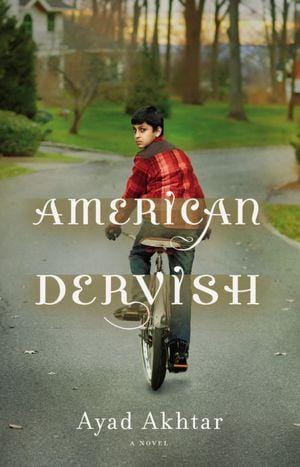American Dervish: Faith, Identity, and Family in Ayad Akhtar’s Novel
Ayad Akhtar’s novel American Dervish explores faith, family, and identity through a Muslim American boy’s coming-of-age in 1980s Milwaukee.

Introduction to American Dervish
Published in 2012, Ayad Akhtar’s debut novel American Dervish follows a Pakistani-American boy growing up in suburban Milwaukee during the late 1980s. The book blends coming-of-age drama with nuanced explorations of faith, immigration, gender politics, and the messy realities of family life. Because Akhtar would later win the Pulitzer Prize for Drama, many readers return to this first work to see how his signature interrogation of identity and belief began. The novel is both intimate and universal, offering a distinctly American story rooted in Muslim experience.
Plot Summary and Setting
The protagonist, Hayat Shah, is a precocious ten-year-old who wants nothing more than to impress the adults around him. His father, a secular physician, warns him away from religion, while his mother struggles with cultural isolation and a failing marriage. Their quiet routine changes when Mina, Hayat’s mother’s best friend, arrives from Pakistan after a painful divorce. Radiant, devout, and intellectually curious, Mina becomes the emotional center of the household and awakens Hayat’s fascination with Islam.
Mina introduces Hayat to the Qur’an, Sufi poetry, and the idea that spiritual ecstasy can be found in everyday life. Yet as Hayat’s devotion intensifies, so does the tension in his family. Mina falls in love with Nathan, a Jewish colleague of Hayat’s father, triggering communal prejudice and exposing sectarian fault lines. In a desperate attempt to protect Mina’s honor and faith, Hayat makes a tragic decision that reverberates through the rest of the story.
Core Characters
Hayat Shah serves as both narrator and moral lens. Through his childhood innocence, Akhtar captures the vulnerability of believing something simply because it feels pure. Hayat’s voice is reflective, tinged with guilt, and often painfully honest; he revisits the small betrayals that led to life-altering consequences. His internal tug-of-war between rational skepticism and mystical yearning mirrors a broader generational conflict faced by many children of immigrants.
Mina is the beating heart of the novel. Educated and articulate, she challenges caricatures of Muslim women by embracing faith on her own terms. Her romance with Nathan amplifies her independence while exposing the patriarchal ambivalence of her community. Secondary figures—Hayat’s alcoholic father, his resentful mother, and dogmatic local clerics—embody competing visions of Islam, assimilation, and masculinity in Reagan-era America.
Major Themes
Religious Identity and Doubt
American Dervish refuses neat binaries between piety and secularism. Akhtar shows how belief can be a source of solace and cruelty, sometimes in the same breath. Hayat’s memorization of the Qur’an aspires to spiritual grace, yet the very passages that uplift him are weaponized by adults to police Mina’s autonomy. Doubt becomes an ethical tool: a way to question dogma and remain open to pluralism.
Coming-of-Age Amid Complexity
Like classic bildungsroman heroes, Hayat seeks belonging. But the stakes are intensified by the politics of identity. Whether he joins his father at a hospital Christmas party or attends Friday prayers with Mina, Hayat is aware that each setting demands a different version of himself. Akhtar deftly portrays the code-switching required of minority youth and the emotional toll it exacts.
Gender and Power
Mina’s story exposes the layers of patriarchal control that persist across continents. Her American suitor offers respect, yet community leaders brand her relationship as apostasy. Akhtar contrasts Mina’s interpretive, love-centered Islam with the misogynistic literalism of a local imam to critique how religious texts are selectively applied to women’s bodies and choices.
Literary Style and Narrative Voice
Akhtar writes in clear, cinematic prose that recalls both contemporary literary fiction and the oral storytelling traditions of South Asia. Vivid sensory details—simmering curries, Midwestern snowfall, the rhythmic recitation of Arabic verses—immerse readers in Hayat’s dual cultural worlds. The first-person perspective heightens emotional immediacy, while retrospective narration allows for mature commentary on childhood misunderstandings.
Cultural Significance
Importantly, American Dervish predates many post-9/11 novels that focus narrowly on terrorism or surveillance. Instead, it offers an interior look at Muslim American life before those external pressures dominated public discourse. By foregrounding everyday joys and sorrows—potluck dinners, parent-teacher conferences, gossip after prayer—Akhtar counters monolithic portrayals and insists on the diversity within Muslim communities.
Why American Dervish Still Resonates Today
More than a decade after publication, the novel remains relevant for readers grappling with polarization, interfaith dialogue, and second-generation identity. Its nuanced depiction of antisemitism within a marginalized group invites conversations about solidarity and intersectionality. Meanwhile, Mina’s assertion that "God is love" offers a timeless antidote to extremist interpretations—whether religious, political, or cultural—that thrive on fear.
Conclusion
American Dervish is a compelling portrait of the compromises we make to belong, the stories we inherit, and the mistakes that shape our moral compass. Ayad Akhtar captures the wonder of spiritual awakening while exposing the dangers of zealotry, delivering a narrative that is as heartbreaking as it is hopeful. For book clubs, educators, or anyone interested in the multifaceted Muslim American experience, this novel offers rich material for reflection and dialogue.



